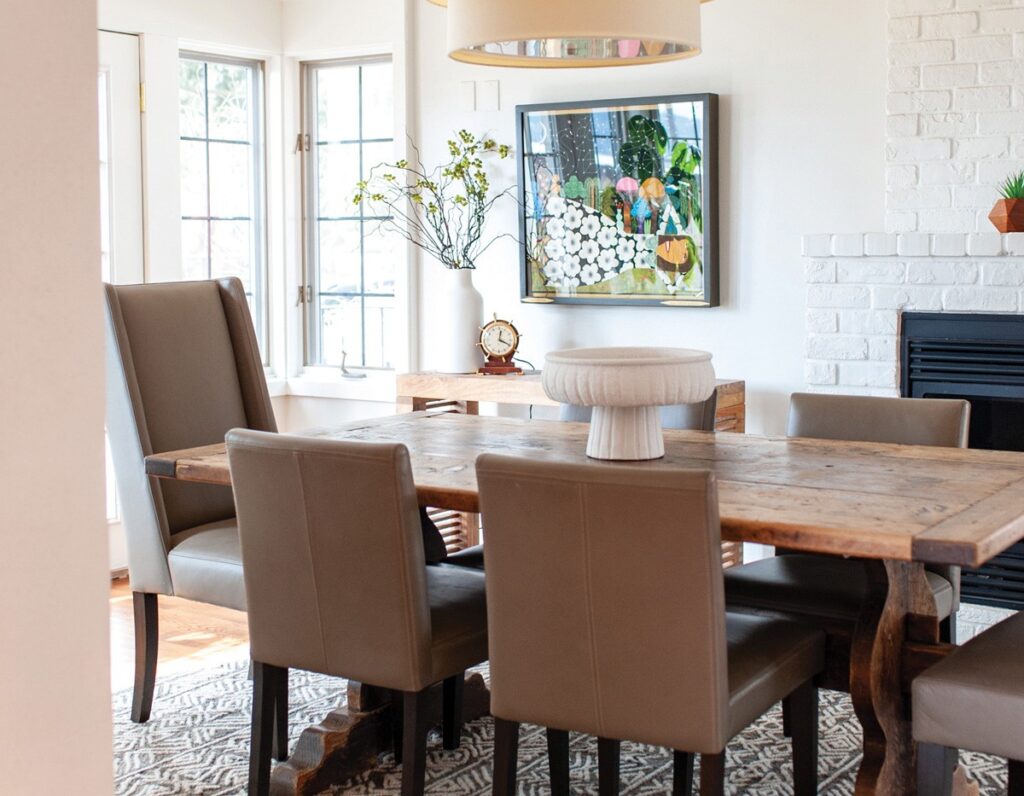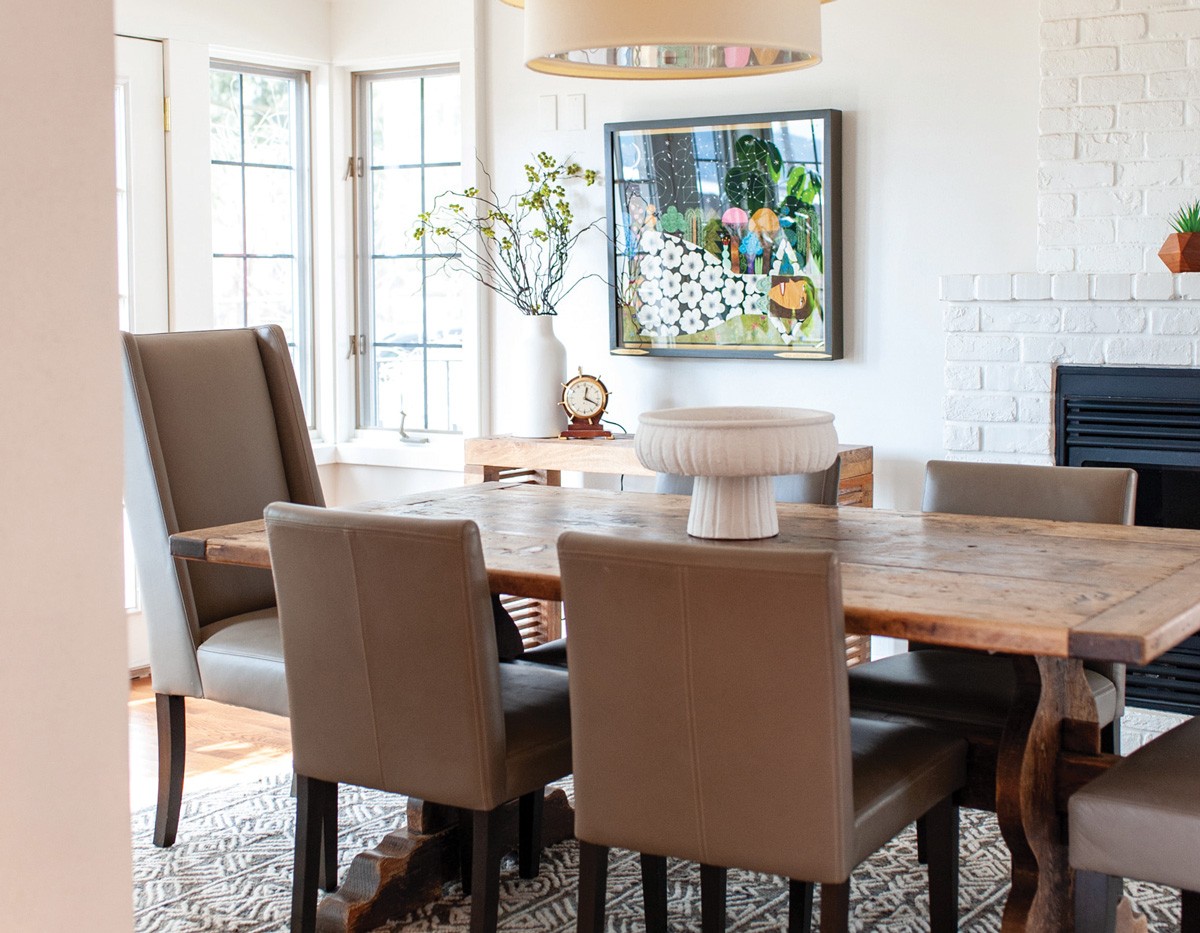
Kayleen Michelle photos
Avoiding clutter around artwork gives it “room to breathe.”
When it comes to decorating your personal space, there really aren’t any rules. Home furnishings, flooring, window treatments and all the colors, patterns and textures of your home combine to create your unique design aesthetic. But if you’re calling your design approach “minimalist” when what you really mean is you’re having difficulty deciding what to put on the walls, our experts have a few simple guidelines to keep in mind.
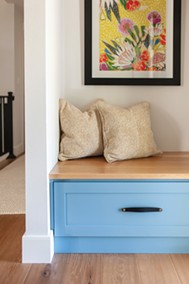
Kayleen Michelle photos
Designer Emily Mejia recommends using pops of color to reflect your personality, while letting “the core of the space be the surrounding that makes you feel most at ease.”
YOU BE YOU
“Figure out what makes you feel good,” says Emily Mejia, the founder of Spokane-based Emily Anne Interior Design. You might love a color, such as red, yet if you feel more relaxed sitting by a river in the woods, look for ways to bring that feeling into your space with similar colors.
“You can still add your personality through pops of color in artwork, pillows, throws and objects, but let the core of the space be the surrounding that makes you feel most at ease,” adds Mejia, who earned a Bachelor of Fine Arts in Interior Design from the Design Institute of San Diego and worked throughout the West before ultimately settling in Spokane.
BUILD IN SOME BREATHING ROOM
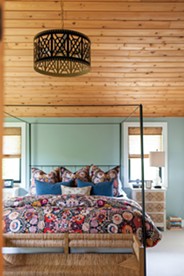
Kayleen Michelle photos
Designer Emily Mejia says experimenting with “patterns, colors, textures and shapes,” is the best way to add a “lived in” look to your space.
“As important as it is to add your personal touches to the interior of your home, there is a time when it becomes too much,” says Mejia. “When you overwhelm the space with too much stuff, you lose sight of the things that you really love and want to showcase.”
Instead, emphasize your favorite pieces with sufficient wall space around them, she says.
Coeur d’Alene’s Art Spirit Gallery curator, Abel Siemens, agrees. “Seeing something is a passive act, and in order to encourage your audience to become active, you need to give them an anchor to get their sights on,” she says. “Giving your artwork space to breathe and room to demand attention gives the audience a chance to relax their vision and engage receptively with any kind of artwork.”
FIND YOUR CENTER
Another approach is to group things together so they “read” as one thing from further away, yet are actually a collection of things. The challenge in this approach is in making sure the items look cohesive.
“We can think about artwork in a home functioning in the same way the solar system [loosely] does, i.e., there is the center ‘sun’ that radiates more artwork,” says Siemens.
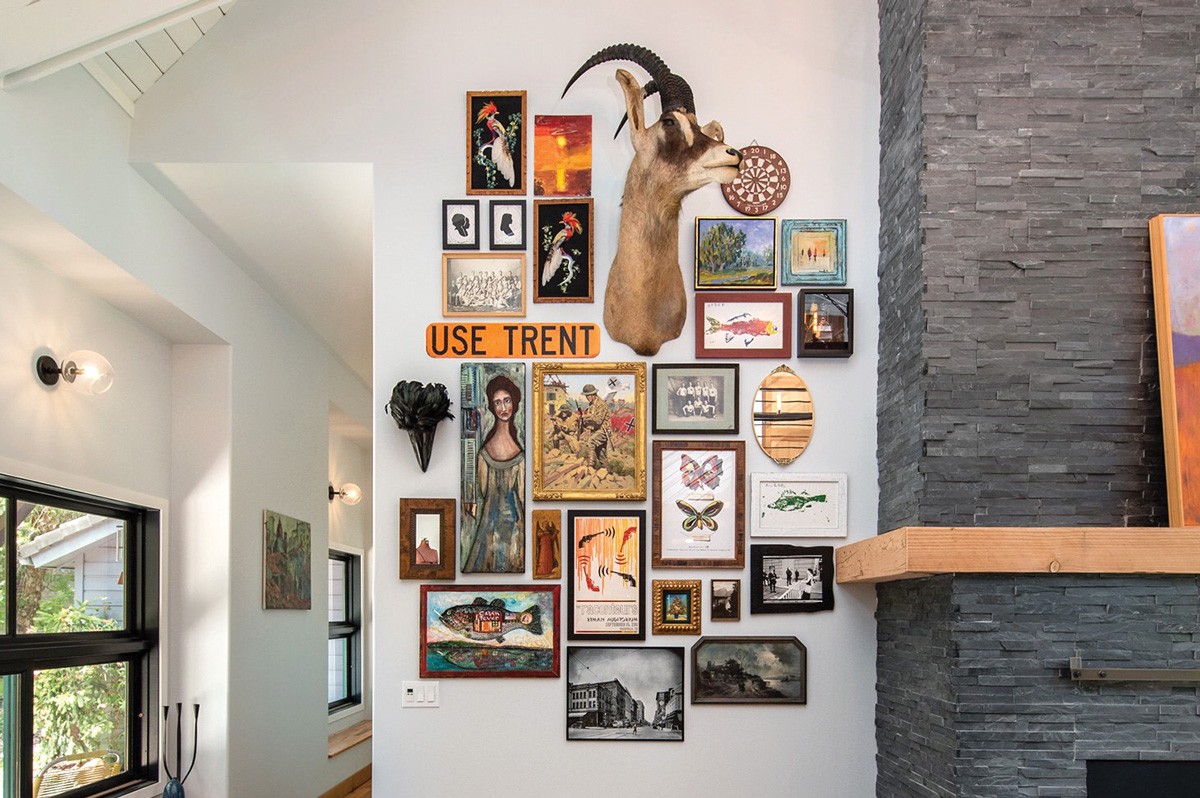
Kayleen Michelle photos
Choosing a dominant element and arranging assorted art around it can unify even a widely varied collection into a unique design statement.
That might mean a large central item, with smaller pieces “radiating” out from around what is a kind of focal point in a grouping of items.
MIX AND MATCH
“Nothing,” says Mejia, “makes a space feel more lived in than mixing in different patterns, colors, textures and shapes.”
But how to go from a mishmash of items to a unified-looking collection? Mejia suggests picturing a home you’ve visited where the décor includes a range of items from a variety of sources — thrift store finds, travel mementos — that nonetheless convey comfort and coziness.
As you approach your own collection, says Mejia, start by picking up some items that really speak to you. “If one is a cheetah print pillow and the other is a floral art print, try them out together,” she says. “Live with it for a few days/weeks and then begin to build on that.”
And, of course, remember that curating home décor that reflects your personality is going to take time and will most likely evolve as you and your design confidence does.
“I think knowing if something will fit all comes down to balance,” says Mejia. “It’s not necessarily an easy thing to learn, but over time, with practice, it becomes easier.”
HANG UPS
Getting art up on a wall can be tricky; here are some expert tips
Having the proper tools when hanging art can make all the difference, says Blair Williams, of the Art Spirit Gallery. For more than 20 years running, the Art Spirit has taken down and put up a completely new exhibition for every monthly art show. That’s a lot of art!
First, you’ll need the proper support for the wall, whether that’s masonry, drywall or some other surface, says Williams.
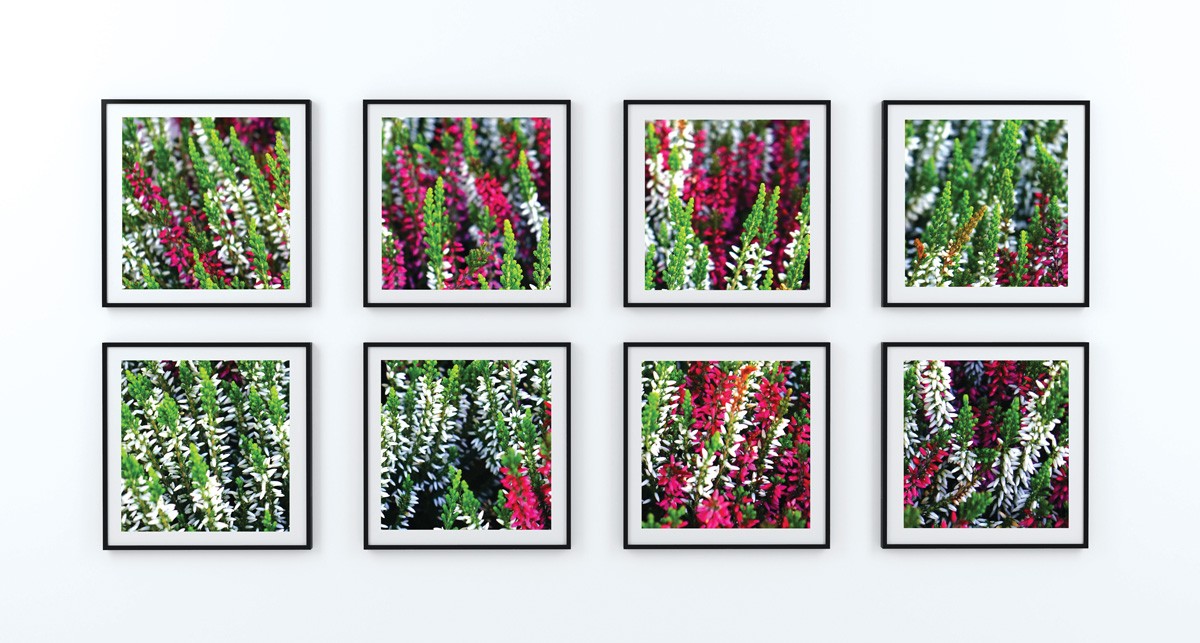
Kayleen Michelle photos
A measuring tape similar to what contractors use extends 20 to 30 feet or more, so you can reach the ceiling as needed. Use a pencil or painter’s tape to mark the space.
Your phone can help you calculate measurements, but also work as a level if you’re using a leveling app.
And a final tip: Slide a fork, tines down, over the hook on the wall when hanging especially large or heavy items with a picture wire on the back. The fork will “catch” the wire, letting you level the piece safely. Remove the fork and you’re done!
